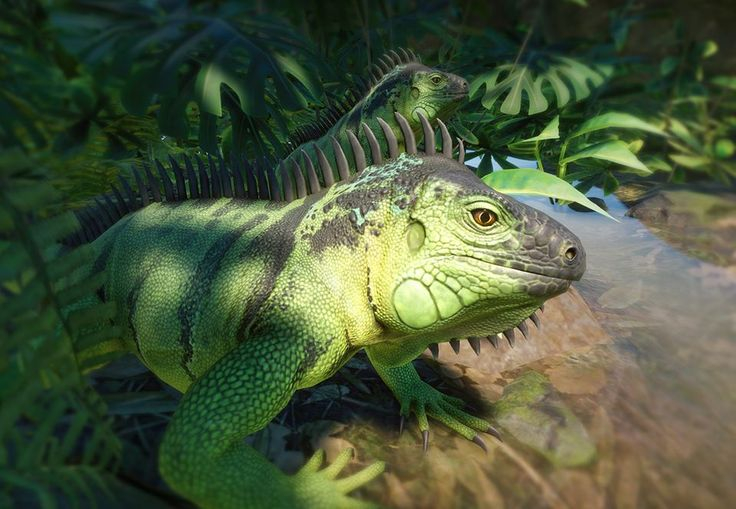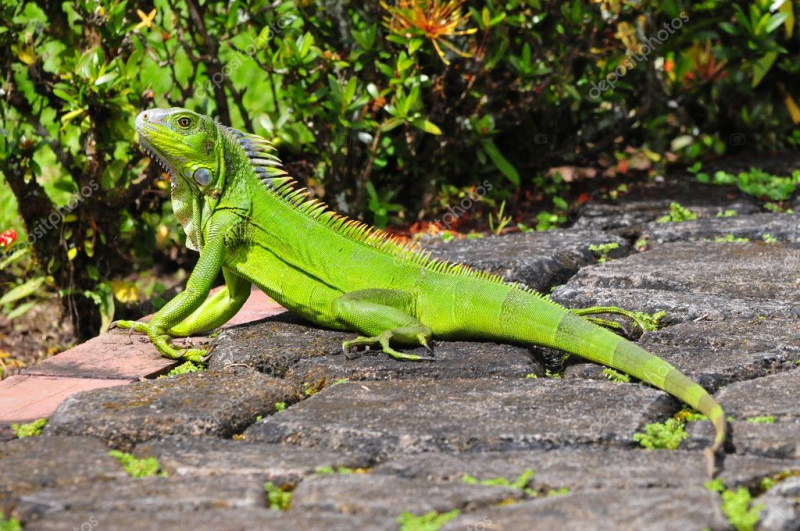Green Iguana
The Green Iguana (Iguana iguana), also known as the American iguana or the common green iguana, is a large, arboreal, mostly herbivorous species of lizard of the genus Iguana. The green iguana has a wide geographic range; it is native to southern Brazil, Paraguay, and as far north as Mexico. It was introduced to Puerto Rico from South America and is widely distributed there; it is known locally as gallina de palo (bamboo chicken) and is regarded as an invasive species there. In the United States, feral populations also exist in South Florida (including the Florida Keys), Hawaii, the U.S. Virgin Islands, and other places. Green iguanas have also successfully colonized the island of Anguilla, arriving on the island in 1995 after rafting across the Caribbean from Guadeloupe, where they were introduced.
It is a herbivore, and as a result of its food, it has made substantial adaptations to its locomotion and osmoregulation. Although some specimens have grown to more than 2 m in length and have bodyweights beyond 20 lb, the species typically reach a length from head to tail of 1.5 m. Due to its placid nature and vibrant colors, it is frequently kept in captivity as a pet, but taking good care of one can be very hard. A hobbyist may find it difficult to accommodate the space needs and the demand for specialized lighting and heat.












